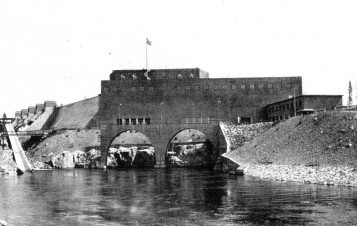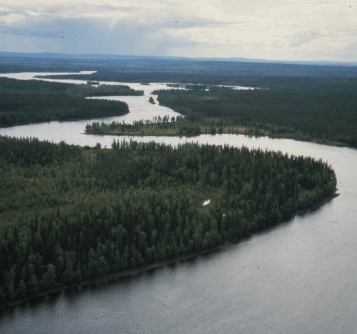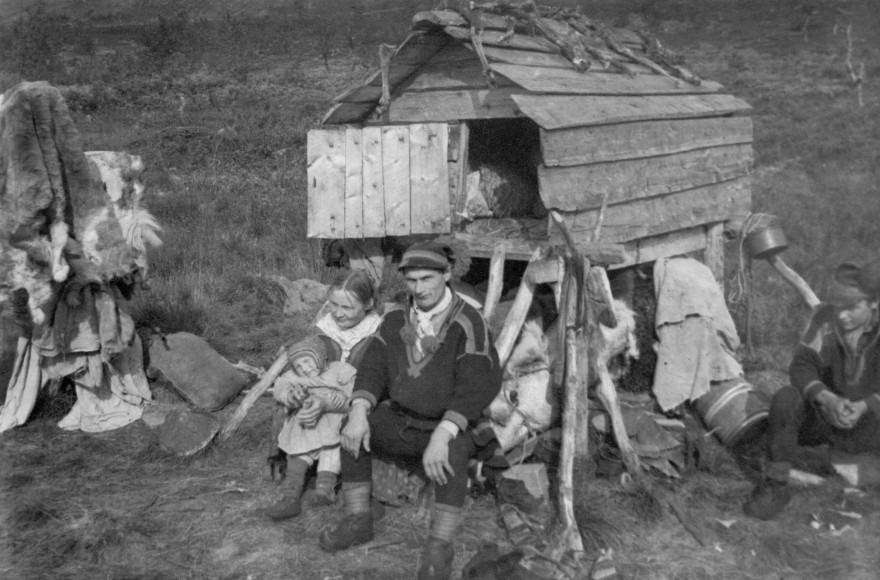
Colonial blindness
The development of hydropower was not a golden age for everyone. Many people had to pay a high price during the 1940s and 1950s, when the Norrland power was exploited, including the Sami.
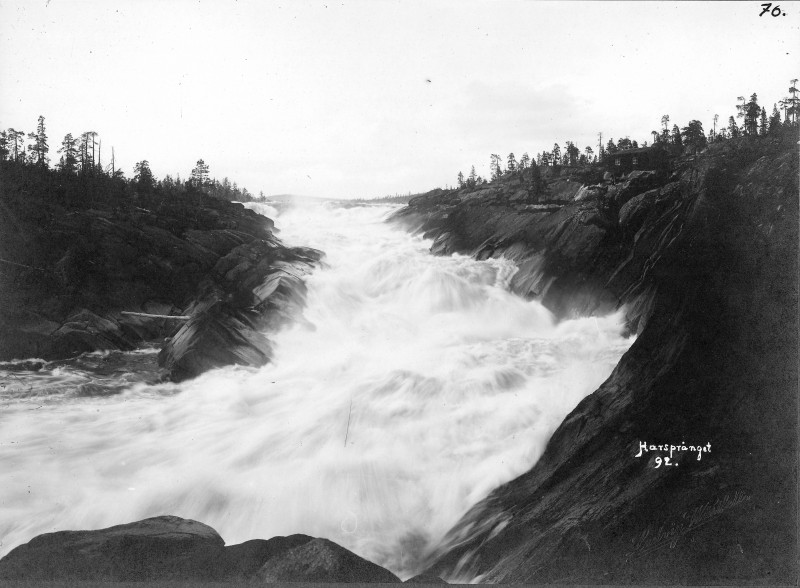
Harsprånget waterfall. Year: 1892 | Place: Harsprånget | Creator: Vattenfall | ID: VF000100
Hydropower plants could not be built just anyhow. According to the Water Act passed in 1918, a number of factors had to be met for the Water-rights court to give a power company permission to develop a waterfall. This included the condition that building work was not to overly affect the local population. Before construction began, the builders had to agree on fair compensation for those affected, and to pay this out.
When the Second World War broke out in 1939, energy supply became an important national issue. As a result, a crisis act was passed, a virtual emergency powers act for power plant construction. This lifted the burden of responsibility significantly for the power companies. Water regulation was permitted before diverging interests had time to be weighed up and the damage assessed. After the war, the crisis act was extended, so that it was easier for power companies to get permission for power plant construction.
The 1918 Water Act already had a short-coming. It had ignored the plight of the Sami. They did not count as residents, as they did not own the land they used. This proved to be a financial loophole for power companies such as Vattenfall when they had to pay compensation to the Sami affected by power plant construction.

Sami family ID: sz1e6579
Nor were the Sami initially a party to the Water-rights court. Instead they were represented by the 'Lapp Sheriff', who was the state's representative at regional level within the Lapland authority. He functioned as both a representative and guardian of the Sami. This body was not abolished until 1971.
Disputes between Vattenfall and counterparties were often settled in the Water-rights court. Until the 1950s Vattenfall had a special central department for handling claims. It was organised into separate offices, based on the types of claims. Their investigations formed the basis of Vattenfall's case in legal proceedings. Injured parties, Sami and others affected by water regulation were not really able to mobilise similar expert support and were often at a disadvantage. Vattenfall spent huge sums of money on investigation to show that higher levels of compensation were not justified. Sometimes the levels of compensation offered were painfully small. However, the water-rights court was responsible for setting compensation levels.
More generous policy in the 1950s
In the 1950s, the Sami were granted the right to their own legal representation and a new, more generous policy was introduced by Vattenfall. There was a desire to settle cases, as far as possible, in a spirit of cooperation. Both parties gained from reaching a voluntary agreement.
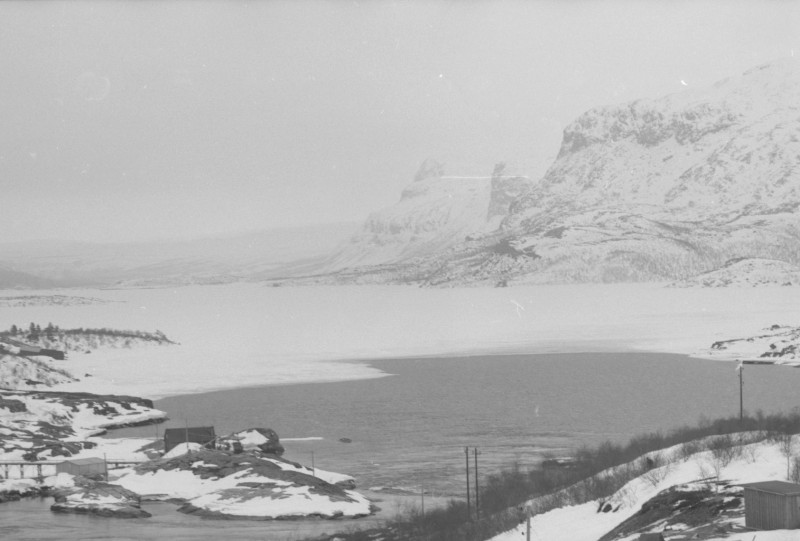
Suorva dam. Year: 1958 | Place: Suorva | Creator: Lennart Nilsson | ID: VF000101
In 1958, during the court case regarding the third regulation of Suorva, a crucial part judgement was issued. The right of use of the Sami was equated with ownership rights, and the loss of reindeer grazing land was compensated as if they actually owned the land. Compensation for buildings was also to be paid directly to those affected. A judgement that personal compensation had to be paid for impaired livelihoods was something new.
This came to be known as the Lövingska Judgement. Folke Löving was a water-rights court judge who became deeply involved with those affected by water regulation. In 1955 he published a book 'I kraftverkens skugga' (In the Shadow of the Power Plant) in which he addressed the shortcomings of the legal process in connection with water regulation. He specifically criticised the fact that hydropower companies did not consult with counterparties during the planning stage. Instead the parties first met in court. It was also unfortunate that power companies often began construction on land before they received or had even applied for a permit to exploit the water resource.

